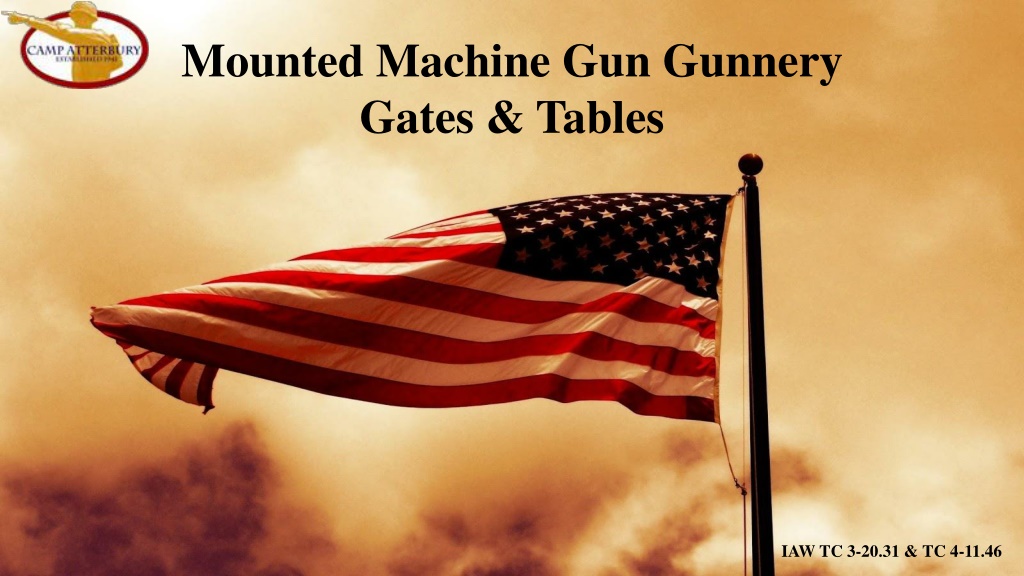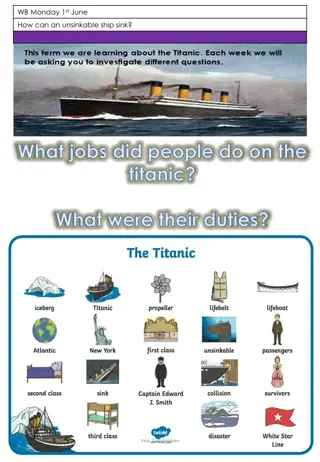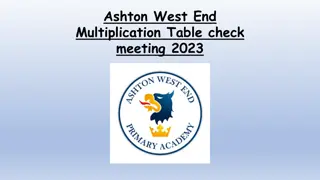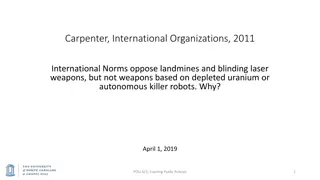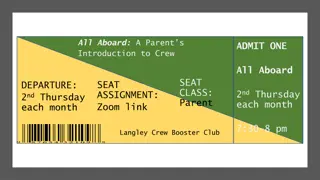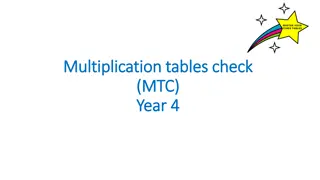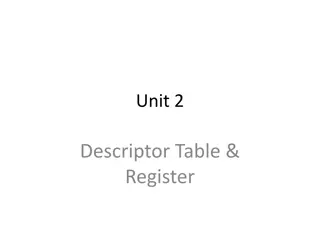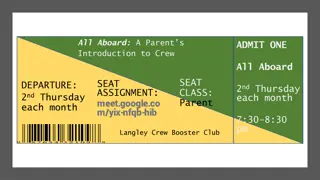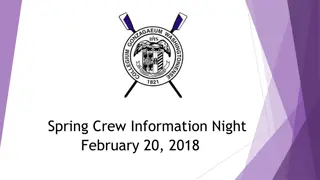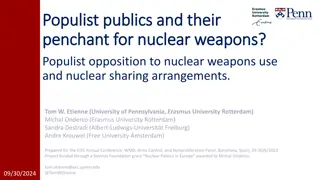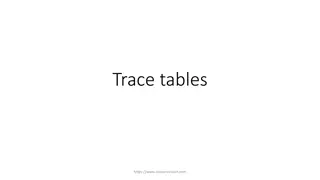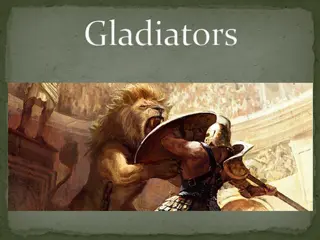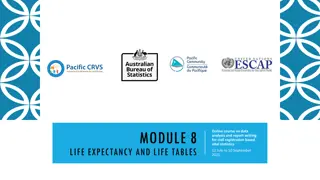Weapons Training Strategies and Crew Gunnery Tables Overview
This article provides an in-depth look at the mounted machine gun gunnery gates and tables, crew gunnery progression, weapons training strategy, training gates, and crew gunnery tables. It outlines the structured approach to attaining and sustaining direct fire proficiency for various weapon systems and echelons through detailed crew training and qualification models. The progression through gates and tables ensures a comprehensive crawl-walk-run method of training to build proficiency progressively. Prerequisite tables and mandatory tests are also highlighted to ensure readiness for live-fire exercises.
Download Presentation

Please find below an Image/Link to download the presentation.
The content on the website is provided AS IS for your information and personal use only. It may not be sold, licensed, or shared on other websites without obtaining consent from the author. Download presentation by click this link. If you encounter any issues during the download, it is possible that the publisher has removed the file from their server.
E N D
Presentation Transcript
Mounted Machine Gun Gunnery Gates & Tables IAW TC 3-20.31 & TC 4-11.46
Gunnery Gate & Table progression TC 3-20.31 outlines platform crew tables designed to attain and sustain main gun, ATGM, and MMG crew direct fire proficiency. TC 4-11.46 outlines platform crew tables designed to attain and sustain CPP crew direct fire proficiency.
WEAPONS TRAINING STRATEGY The WTS is detailed the exact same in both the TC 3-20.31 & TC 4-11.46. The WTS is comprised of specific elements that build a training and qualification model for each weapon, system, and echelon through battalion or squadron.
Gates Each training density contains four specific echelon-based gates. These gates must be completed in order shown below to progress to the next gate of training. The progressive gates are: Gate 4 Individual and crew served weapons. Gate 3 Squad, crew, fire direction center, and mortar. Gate 2 Section and platoon. Gate 1 Company/troop/team combined arms live fire exercise (CALFEX) and battalion /squadron/task force fire coordination exercise (FCX).
Crew Gunnery Tables Gate 3 A standard series of tables that progressively build weapon system proficiency in a crawl-walk-run method of training. For each weapon, system, or echelon, a series of six tables were developed using hands- on, TADSS, simulations and gaming, and live training ammunition Prerequisites. Tables I, II, and III Live. Tables IV, V, and VI
Tables Table 2-1 shows the crew tables and provides their general description and primary method of training. Table 2-1. Crew tables The WTS uses these tables to provide a common, consistent training model to all direct fire crews. TC 3-20.31 para 2-4 & TC 4-11.46 para 2-5
Prerequisite Tables Table I, Gunnery Skills Test (GST), must be completed for record between T-6 and T- week Table I is a mandatory prerequisite for any live fire event, including zero procedures (if applicable) and any live fire maintenance procedure. Table II, Simulations Table II must be completed between T-6 and T-week to support the training events. Table 2-2 shows the authorized primary and alternate simulations (IAW each TC) Table III, Proficiency Proficiency, is performed on the crew s vehicle. This course requires the use of laser-based TADSS for all crews. This course MUST be qualified device-based prior to using any live ammunition.
Live Tables Table IV, Basic, Table IV is performed on the crew s vehicle during day and limited visibility. Crews execute these tasks from the offense and defense using live ammunition. Table V, Practice, Table V is performed on the crew s vehicle. This table prepares crews for the Table VI, Qualification. Table VI, Qualification, is performed on the crew s vehicle. It is designed to train and evaluate the crew s ability
Gate Progression Successful completion of all prerequisites and Table VI complete the requirements of Gate 3.Crews that complete Gate 3 are authorized to conduct live fire Gate 2 events after successful completion of the Gate 2 prerequisite tables.
Collective Gunnery Tables Collective Gunnery Tables (GT) are designed to test the unit s and leader s ability to take knowledge learned from and crew GTs and apply it to tactical combat scenarios at the section and Convoy Escort Team (CET) levels. These Tables are not a Convoy Live-Fire Exercise. Collective proficiency exercises (if applicable) and practice tables are a building block for section and CET qualification. Rehearsal tables are resourced for device-based gunnery. Sections and CET s should participate collectively in device-based training at least once before conducting live-fire training at that level. When they do qualify, sections and CET s follow the guidelines and standards in the applicable collective tasks and this chapter. TC 4-11.46 para 4-11
Section & Platoon Tables SECTION LFX A qualified section is 2 to 5 CPP Platforms Para 4-13. Table 4-2. Shows CPP section LFX, training and qualification. (AC) 12 months (RC) Post Mobilization Table I SOP&E Table II Simulations Table III Maneuver Prerequisite Table IV Proficiency (DRY) Table V Rehearsal (BLANK) Table VI Qualification (LIVE)
CPP sections must successfully complete Table VI before executing any live-fire team or larger event in Gates 2 or 1. A qualified section is 2 to 5 CPP Platforms that have successfully completed Table VI including the tactical tasks selected by the commander. Authorized commanders may deviate from this requirement when live- fire and tactical proficiency is displayed adequately.
Company Live Fire Exercise Base Defense Live Fire Exercises and Convoy Live Fire Exercises are not exercises for untrained units. Collective proficiency exercises (if applicable) and practice tables are a building block for a company LFX. Rehearsal tables are resourced for device-based gunnery. Companies should participate collectively in device-based training at least once before conducting live-fire training at that level. When they do qualify, the company will follow the guidelines and standards in the applicable collective tasks IAW TC 4-11.46
Convoy Live Fire Exercise Company LFX will be conducted in two phases, one during the day and one at night. (AC) 12 months (RC) Post Mobilization Table I SOP&E Table II Simulations Table III Maneuver Prerequisite Table IV Proficiency (DRY) Table V Rehearsal (BLANK) Table VI Qualification (LIVE)
Base Defense Live Fire Exercise Unit Defense LFX The objective is to develop proficiency working as a Company providing unit defense. (AC) 12 months (RC) Post Mobilization Table I SOP&E Table II Simulations Table III Maneuver N/A Prerequisite Table IV Proficiency (DRY) Table V Rehearsal (BLANK) Table VI Qualification (LIVE)
